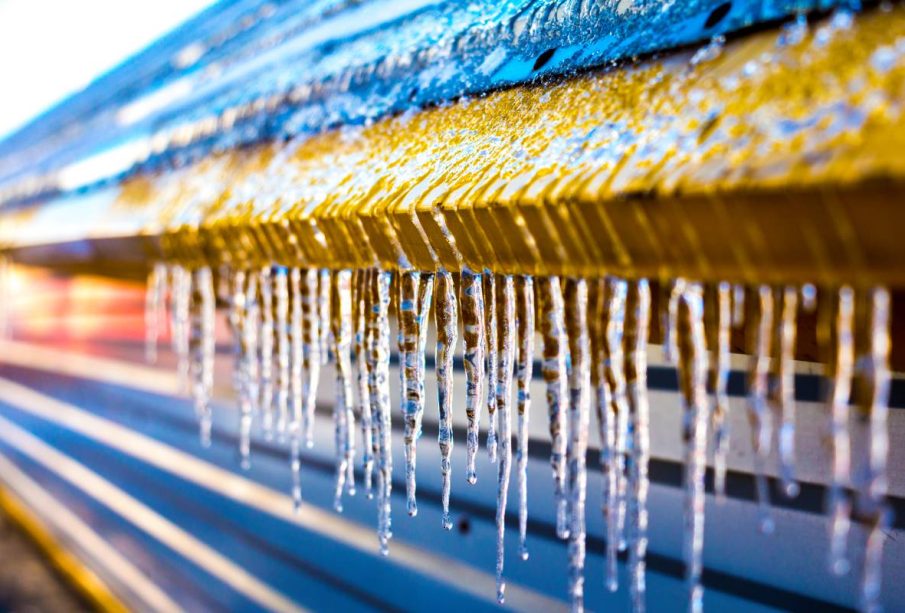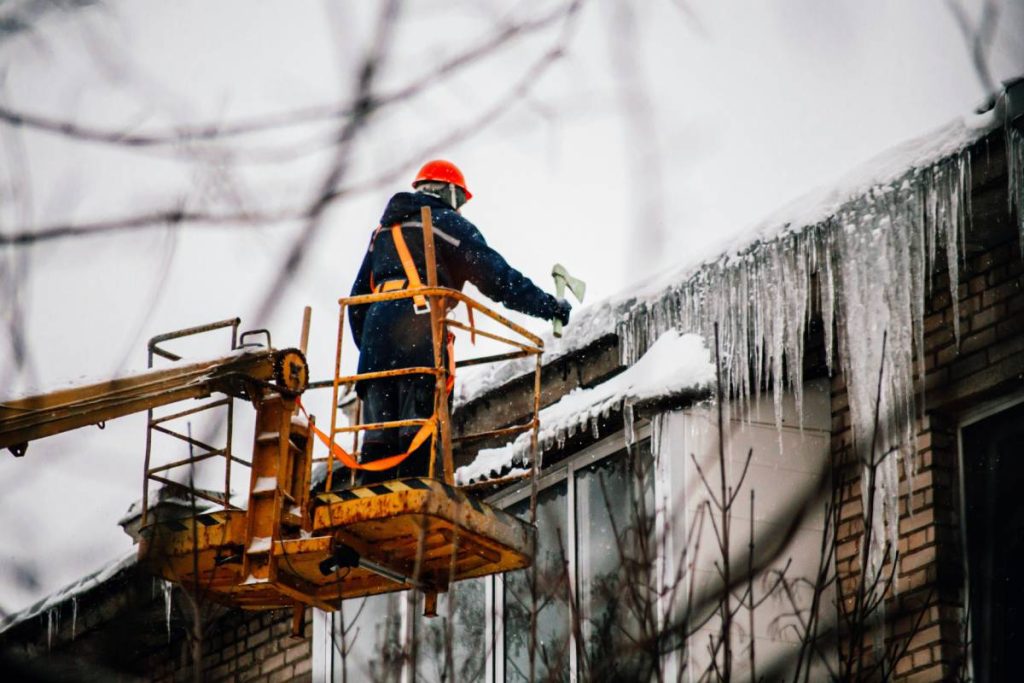How do ice dams form? How to safely remove ice dams from my roof? How to prevent ice dams?

Ice dams can be a significant problem for homeowners during the winter months, leading to roof leaks, water damage, and potential structural issues. Understanding how ice dams form and implementing preventive measures can help protect your home and avoid costly repairs.
In this article, we’ll explore the causes of ice dams, safe methods for removing them, and practical steps for preventing their formation in the first place.
Related idea:
How do ice dams form?
Ice dams form on the edge of a roof when snow melts and refreezes at the eaves. Here’s how it happens:
Several factors can contribute to ice dam formation, including insulation levels, ventilation, roof pitch, and weather conditions. Proper insulation and ventilation can help prevent ice dams by maintaining a consistent roof temperature and preventing excessive snowmelt.
How to safely remove ice dams from my roof?
Removing ice dams from your roof safely requires caution to avoid damaging your roof or injuring yourself. Here are some steps you can take:
- Use a roof rake: If you can reach the edge of your roof safely from the ground, a roof rake can be effective in removing snow before it melts and forms ice dams. Be careful not to damage your roof shingles while using the rake.
- Create channels: Once an ice dam has formed, you can create channels to allow melted water to drain off the roof. This can be done by filling a sock or pantyhose with calcium chloride ice melt and placing it perpendicular to the roof edge. This will melt through the ice and create a path for water to escape.
- Chip away: If the ice dam is small and easily accessible, you can carefully chip away at it using a blunt instrument like a rubber mallet or a hammer with a wooden block. Avoid using sharp tools that could damage your roof.
- Steam: Using a steam machine specifically designed for melting ice dams can be effective, but this method requires caution and expertise to avoid damaging your roof or injuring yourself. It’s best to hire a professional if you choose this method.
- Professional help: If the ice dam is large or difficult to remove safely on your own, it’s best to hire a professional roofing contractor who has experience dealing with ice dams. They have the proper tools and techniques to remove the ice dam without causing damage to your roof.
Regardless of the method you choose, safety should always be your top priority. Avoid climbing onto the roof if it’s covered in ice or snow, and consider hiring a professional if you’re unsure about how to safely remove the ice dam.
How to prevent ice dams?
Preventing ice dams involves addressing the factors that contribute to their formation, such as heat loss from the house, inadequate insulation, and poor roof ventilation. Here are some preventive measures you can take:
- Insulate your attic: Proper insulation helps to keep heat from escaping through the roof and melting the snow. Make sure your attic is well-insulated, especially in the ceiling and along the eaves. This will help maintain a consistent temperature on your roof.
- Ventilate your attic: Good attic ventilation helps to maintain a cold roof temperature, reducing the likelihood of snow melting and forming ice dams. Ensure your attic has both soffit vents (to allow cool air in) and ridge vents or gable vents (to allow warm air to escape).
- Seal air leaks: Seal any gaps, cracks, or holes in your attic floor, walls, and ceiling to prevent warm air from escaping into the attic space. Pay particular attention to areas around light fixtures, plumbing vents, chimneys, and attic hatches.
- Keep gutters and downspouts clear: Regularly clean your gutters and downspouts to ensure proper drainage of water away from your roof. Clogged gutters can contribute to ice dam formation by preventing melted snow from draining properly.
- Install heat cables: Heat cables, also known as heat tape or gutter heaters, can be installed along the edge of the roof and in gutters to help melt snow and prevent ice dams from forming. However, they are not a permanent solution and should be used in conjunction with other preventive measures.
- Remove snow: Use a roof rake to remove snow from your roof after each snowfall, especially from the lower portion of the roof near the eaves. This can help prevent the buildup of snow that contributes to ice dam formation.
- Consult a professional: If you’re unsure about how to properly insulate and ventilate your attic or if you’re experiencing frequent ice dams despite your efforts, consider consulting a professional roofing contractor or energy auditor. They can assess your home’s specific needs and recommend the best solutions for preventing ice dams.
When should you call a professional?
Dealing with ice dams can be tricky because they form in hard-to-reach places and are exacerbated by freezing conditions. If you’re not comfortable climbing ladders or working on a slippery roof, it’s best to call a professional to remove existing ice dams and set up preventive measures like de-icing cables.
Furthermore, certain tasks related to ice dam prevention are better handled by professionals. These include installing attic insulation, sealing air leaks, adjusting home ventilation, and adding attic vents for better airflow. Many homeowners find it beneficial to hire professionals to use steam to melt ice dams or physically break them up.










